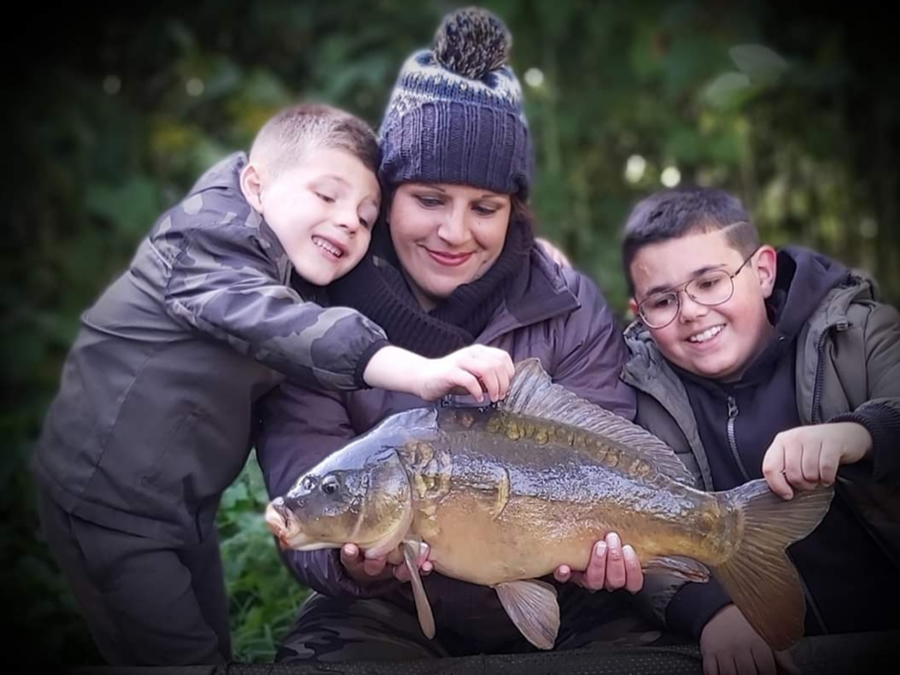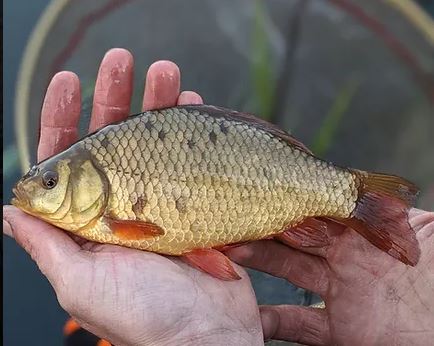
Fisheries Management
The goal for successful delivery of a fishery management plan is sustainability. From an angling perspective, that means anglers are offered fish to target that are healthy and proportionately plentiful. The complication is that each pond, lake, river or stream has its own, unique personality and there is no single solution when it comes to successful husbandry.
If your concern relates to freshwater fisheries management advice (covering fish stocks, habitat, disease, regulation and incidents) then your first point of contact should be your local Environment Agency Fisheries Officer. If you don’t know your local Area Environment Agency Fisheries Officer call 03708 506 506.
The 24-hour Environment Agency hotline is 0800 80 70 60.
The information offered here reflects some of the key elements of fishery management that research tells us clubs and venues regularly seek guidance on.
An Introduction to Fisheries Management Planning
Having a clear vision of how a fishery might be developed and improved can be an exciting time for any group, but the key to long-term success is in the planning. In this 45-minute presentation, Paul Coulson, from the Institute of Fisheries Management, offers an overview of what to consider.
- Water Quality?
- Habitat?
- Which fish to stock?
- How many?
- Disease Prevention?
Paul Coulson has worked with the Institute of Fisheries Management since 2012. His experience in Fisheries Management reflects a journey that began at Sparsholt College in Hampshire and included surveying and data work with the Environment Agency and soil and water sampling as an Environmental Scientist within a private consultancy. Before joining the IFM, Paul spent 8 years as head of the fisheries at a land-based college. He is now, an established member of the IFM’s executive management team.
For more information on the IFM and it’s work, visit the IFM official website.
Predation
However well a fishery’s eco-structure is managed, predation is a serious threat to overall sustainability. Here, we present an overview of predation and its challenges and offer a flavour of the potential solutions a fishery might utilise.
For further information, predation is covered in-depth on dedicated pages within the Fisheries Support section of the website and a comprehensive collection of information can be found by clicking here. These pages detail the dedicated predation services offered to clubs and fisheries by the Angling Trust’s Fishery Management Advisors, Richard Bamforth and Jake Davoile.
Managing Cormorant Predation
Jake Davoile discusses cormorants and how to defend against them with the use of humane techniques to deter and exclude.
The Cormorant Sightings Log Jake references in this presentation, is available for free download and use here. Cormorant Sightings Log
Building Otter Fences
An otter stealing into a fishery and taking valuable fish can be irritating, but the animal itself is only acting instinctively. So keeping them out and letting them continue their existence elsewhere is always the focus when our Fishery Management Advisors are asked to advise. Building an otter fence can be a massive undertaking but in the long run it can make a huge difference to the success of your fishery as a productive venue.
Carp expert Ian Chilcott visited an otter-affected lake to see how one club has benefitted from a well constructed fence and present some construction advice from those who’ve completed the process. In this Angling Trust video, Ian also discusses the possible opportunities there can be clubs to receive for funding support for such a project through the Angling Improvement Fund.
Please Note: The Angling Improvement Fund referred to in this video, is governed by the Environment Agency and managed by the Angling Trust. Funding rounds related to specific issues such as Predation are announced on a calendar basis. Please check regularly for updates on the Funding Page of the Angling Trust website.
Funding for the AIF is sourced from the proceeds of Environment Agency rod licence sales. This helps to ensure that rod licence income is returned into core angling projects.
Maintaining Otter Fences
If you already have your otter fence in place, do you know that it’s in full working order? Otters will quickly take advantage of any weakness in your defences that might have been caused by weather damage or general wear and tear so regular inspections to determine necessary repairs are essential. In this short video, Jake Davoile highlights signs to watch out for that could prove the difference between a hungry otter feeding himself on your stock or looking elsewhere.
Reading Material
On October 8th 2024, The European Inland Fisheries Advisory Commission (EIFAAC) presented a workshop on Management Advice For Reducing The Impact of Cormorant Predation on Fish and Fisheries. The event was staged in Pula, Croatia and welcomed 78 attendees from 24 countries. The delegate list included online representation from the Angling Trust and the Environment Agency.
The workshop discussed the findings of an EIFAAC survey which showed an increase to cormorant impact on recreational fishing and that many different management measures are applied to combat the problem throughout Europe. The full report is available for download here. Readers are advised to seek guidance on any local issues from the Angling Trust’s Fishery Management Advisors, Richard Bamforth or Jake Davoile, both of whom were online attendees for the Croatia workshop.
Water Quality
Water quality is a key component of a successful, healthy fishery. Below, we offer advice and information on how clubs and fisheries can improve and maintain the health of their waters and their stocks by joining others in a national data collection programme.
The Water Quality Monitoring Network
Maintaining Water Quality
Stocking a body of water with fish and leaving them to their own devices can have fatal consequences for the fish and possibly even the venue in general.
In this 20-minute presentation, Environment Agency Fisheries Specialist, Kye Jerrom discusses the importance of water quality maintenance to offset any crisis and the potential loss of fish stock. Kye also reflects on some of the monitoring and service equipment that can help.
During this presentation, Kye references the importance of carrying out the Check, Clean, Dry process that will help prevent cross infection from water to water. For more information on Check, Clean, Dry, click here.

Click on the poster image for details of how to receive “Stop The Spread” posters, leaflets and stickers for use around your club or general venue.
To read a practical case study of water management in action, click the image to read how two club fisheries came back from the brink with the help of the Environment Agency’s Regional Fisheries Officers.
Fish Legal
“Fish Legal was set up to protect all inland and coastal waters in the United Kingdom from pollution and other environmental damage.
Previously known as the Anglers’ Conservation Association which was founded in 1948, Fish Legal is a member-based organisation which continues to build on over 70 years of experience in using the law to fight polluters. It is united in a collaborative relationship with the Angling Trust and can provide advice and take forward legal cases on behalf of their members on threats to fisheries.
To find out more about the support they can provide, visit the Fish Legal website.
Dry Weather Management
The impact of prolonged dry spells on fish stocks and waterways is usually a seasonal issue but awareness and preparation is key. The Environment Agency has produced two downloadable guides reflecting riverine and stillwater management advice.
Dry Weather Guidance For Riverine Fishery Managers
Dry Weather Guidance For Stillwater Fishery Managers
Please check back for seasonal updates. Current Versions: 2024
If crisis strikes, the Environment Agency’s Fisheries Officers are a phone call away.
Take note of the EA’s contact details for emergencies because if you need help, you might not have time to search.
To report any incidents of fish death/distress – 0800 80 70 60
General Enquiries – Enquiries@environment-Agency.gov.uk
Fish Stocks & Fish Welfare
Stocking Regulations and Best Practice:
In this 25-minute presentation, the Environment Agency’s Fisheries Regulation and Compliance Officer, Paul Lidgett explains the regulations and general pitfalls clubs must consider before undertaking a stocking programme on any water. The risks, the rules and the long-term benefits of short-term planning and preparation.
Creating Habitat on a Stillwater Fishery:
- Fish protection
- Hot and cold weather resilience
- Aquatic life encouragement
- Diversity of plantings
- Fish spawning
Reservoirs
Reservoir safety is the responsibility of a total of three stakeholder groups. Most notably, from an angling perspective, one of those groups is owners and operators. The other two groups are Reservoir Panel Engineers and the Environment Agency.
Owners and operators are responsible for the overall safety of their reservoirs. They must ensure regulatory inspections are conducted by engineers on the reservoir panel and that they act upon all recommendations from such inspections.
Reservoir Safety Reform Programme
The Reservoir Safety Reform Programme is grounded in the basic principles of reservoir management but is an exercise being delivered following the independent review of reservoir safety that was conducted in 2019 following the Toddbrook dam collapse and evacuation in 2019.
The Environment Agency along with the Department for Environment, Food and Rural Affairs (Defra), the Welsh Government and Natural Resources Wales (NRW) are delivering the programme on a staged basis over several years.
The current status of the Reservoir Reform Programme can be found within the latest report on the Environment Agency website. This information includes details of a first public consultation in autumn 2025 and a new system for reporting incidents.
Visitors to this page may also find the following presentations of interest.
In November 2022, the Angling Trust delivered a virtual fisheries forum that included a presentation by Tony Deakin of the Environment Agency. This presentation discusses the overall reform process and how it could have implications for angling clubs & fisheries.
In February 2024, Tony Deakin presented a progress update. This forum also hosted a Question & Answer session. All information was correct as of the time of transmission.
It is important for all interested parties to review these presentations in conjunction with the latest report on the Environment Agency website
Crucians and Tench Fisheries
The commitment of anglers towards fish welfare and the preservation of individual species is no better highlighted than with the campaigns around crucians and tench. With the right conditions, these are fish that clubs and fisheries might consider focusing on in stocking programmes to further the future wellbeing of both species. For further information on Crucians and Tench Fisheries please contact Fisheries Support Officer Mark Egerton on 07415 384554 or email mark.egerton@anglingtrust.net
The National Crucian Conservation Project (NCCP) was officially launched in 2014. The working group includes representation from the Angling Trust, the Environment Agency, the Government’s Centre for Environment, Fisheries and Aquaculture Science (CEFAS) and the Institute for Fisheries Management (IFM).
The primary objectives of the NCCP are to promote the conservation of the species and its habitat and encourage the development of well managed crucian fisheries.
Click on the image for more information.
Tench Fishing: The Future is a joint initiative between the Tenchfishers and the Angling Trust to foster the preservation of tench and tench fisheries.
The Tenchfishers are a long-established group of anglers who seek to catch and enjoy their chosen species, but also aspire to promote tench as a species to stock and safeguard.
Click on the image for more information.












